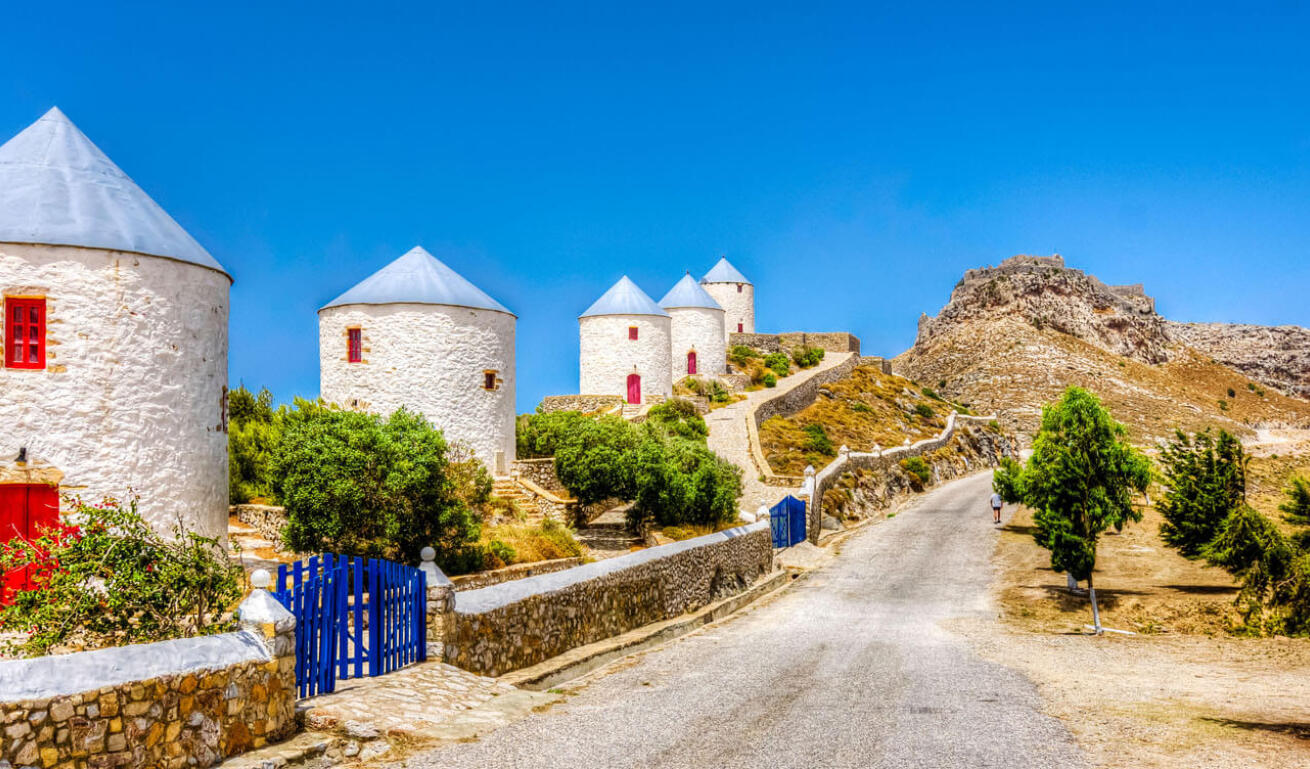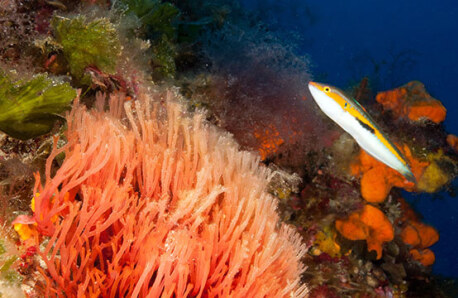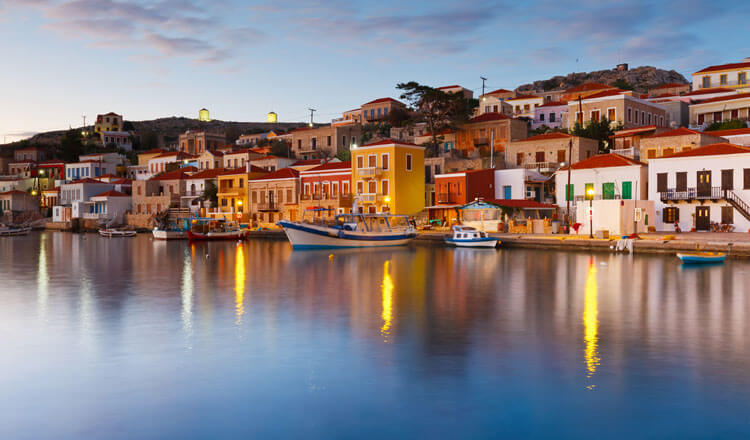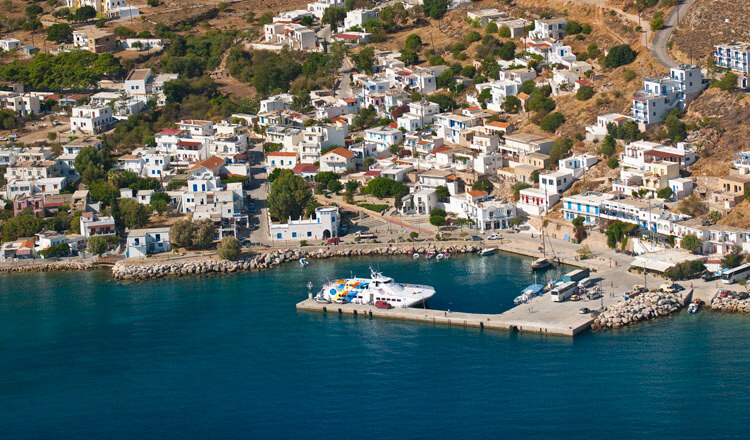
Leros
NOW
32 °C
Next 5 days
-
THURS
29 °C
-
FRI
31 °C
-
SAT
30 °C
-
SUN
31 °C
-
MON
32 °C
Source: National Observatory of Athens /meteo.gr
Unique Experiences
In Greek mythology, Artemis (Diana to the Romans) was the goddess of wild animals, vegetation, and the hunt. This fertile land of green low hills & plains was her favourite island, and she was much revered by the locals, who built her temple in the Partheni area, in the north.
Αround the island
Head towards the south and visit Palaiokastro, the remains of the older castle on Leros Island, on the hilltop overlooking Xerokampos village. Inside it you will see the early Christian church of the Virgin Mary (4th c). The walls at the north-eastern side of the hill were believed to be Cyclopean (i.e. they were huge square stones, 500 kg each, thought to have been built by the ancient Greek mythical giants called Cyclopes).
Picturesque Villages around the island
Agia Marina
Agia Marina, the capital of Leros, unfolds around the Agia Marina bay. It was the island’s port before Laki. It comprises smaller settlements of Agia Marina; Platanos (Leros’ oldest settlement); and Pandeli (with its own small beach). All settlements feature graceful old mansions with stone or wooden balconies, whitewashed stone walls, and picturesque alleys. At one side of the city, there is Brouzi, the old Roman fort where there are marvellous examples of mosaic art, archways, and the ruins of an aqueduct which, up to 1988, operated as a shipyard. On the other side of the city there is an old, historical watermill which seems to hover over the waters. Agia Marina attracts most of the island’s traffic since most of the island’s bars, tavernas, and traditional coffee shops are to be found there.
Castle of Panagia (Kastro tis Panagias) or the Virgin’s Fort is situated behind five windmills on the top of Apitiki hill. It was built in the mid-Byzantine era. The 17thc. Castle with its gilded iconostasis (templon) and ancient iconography is built on the west side of the fort. On the grounds, there is an Ecclesiastical Museum, exhibiting various sacred vessels and icons.
The Archeological Museum. It is in a 1882 neoclassical building. Exhibits include finds from prehistoric times, ceramics from the Geometric to the Roman Period, and finds from early Christian times.
North
Krithoni
Krithoni is near Agia Marina and Alinda village. Its picturesque houses, small country churches, hotels, rooms for rent, and shops seem to be “suspended” over a verdant hill. A beach of shallow waters is ideal for swimming.
Alinda
Alinda attracts most of the tourism traffic. It is built in a verdant landscape, near Platanos. Farther south, beyond the bay of Gourna, there is the small Panagia Gourlomata church, near “Drimonas”: The church is the island’s most significant mediaeval monument.
Visit the Folklore-History Museum, in the Belenis Tower (on the village’s beachfront). The tower was built in the 1930’s and its exhibits include various folklore and historical items relating to the island’s life. Pay a visit to the Monasteries of Agioi Saranda and Agios Sofronios.
Partheni
Built in a fertile valley, Partheni has been inhabited since ancient times. On a hill south of the airport, excavations have revealed the courtyard of an 8th or 7th-century BC temple dedicated to the goddess Artemis. The myth goes that it was at that spot that Artemis exiled the Meleagrides (sisters of Meleagros) after turning them into hens for weeping too loudly over the loss of their brother.
In Partheni, don’t miss the opportunity to visit the Agia Kioura church, north, close to Partheni bay; its frescoes and icons were painted by political exiles in 1967-1974 and the Agios Isidoros church (4 km N), close to Kokali beach, halfway down Leros’ west coast; it is built on an uninhabited skerry, 50 metres off the beach. Next to the rock, ruins of an ancient temple are visible.
South
Laki
Laki is a picturesque settlement with the city plan of a European city, eucalyptus-lined streets and imposing buildings in the Italian architectural style. The design and conversion of the scenic bay into a town took place during Italian rule (1930-1936). Lakki is the largest natural harbour of the eastern Mediterranean and its bay was once a swamp. In order to drain the swamp waters so that they may build their naval station and their hydroplane base, the Italians planted countless eucalyptus trees.
During a town promenade pass by the marketplace where the Clock Tower is, the Customs House, the building of the Naval Command and the movie theatre: The first movie projector in Greece was run in that movie theatre!
Pay a visit to the Memorial (on the beach) dedicated to the Greek destroyer “Vassilissa Olga” which was sunk during the German air raid of September 26, 1943.
Visit the tunnel-museum, located in the area of Merikia. During WWII it served as a bomb shelter and emergency operating facilities. Today, at the municipality’s initiative, it was turned into a museum exhibiting WWII-related items. The tunnel-turned-museum also shows a documentary on the 1943 sea battle of Leros.
You can also pay a visit to the Agios Nikolaos Catholic church, where today’s services take place according to the Christian Orthodox faith and the 12th century church of Agios Ioannis the Theologian (northwest of the city). Its frescoes and icons date back to the 12th-13th century.
Xerokambos
It is a seaside village that overlooks Kalymnos and Glaronissia. The slopes around the village are covered with scrubland and the valley sloping down to the sea alternates olive groves with clusters of cypress trees.
Visit the Castle of Lepidon, on the hill: it is 2,500 years old and the Panagia Kavouradena church. It stands at the edge of the Xerokambos natural fjord, tightly wedged between two large boulders which form a roof over the church. It is said that, in 1796, a fisherman from Kalymnos commissioned Leros artisans to build it. The church’s old icon is now in the Ecclesiastical Museum in the castle of Leros.

BY SEA
Leros is connected to Piraeus and other ports of the Aegean. The conventional ferries make the route "Piraeus - Leros" in about 9,5h. while the high-speed ones in about 8h. The connections are made from both ports of the island, Ag. Marina & Port of Leros.

BY PLANE
Leros is connected to Athens International Airport, the flight lasts 1h. but also to Macedonia International Airport (Thessaloniki). Ιt is also connected to other airports in Greece.














